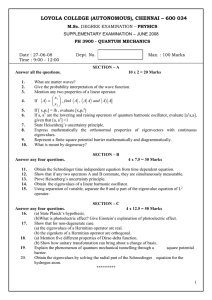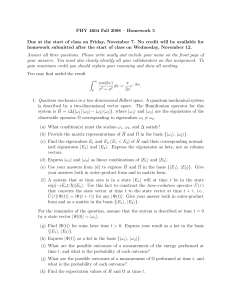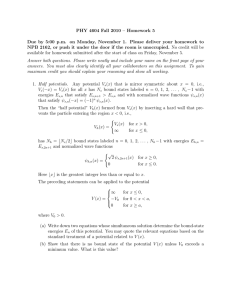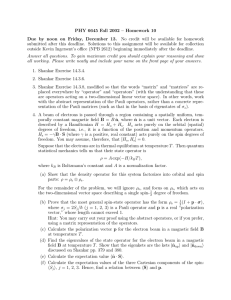PHY 6645 Fall 2002 – Homework 3
advertisement
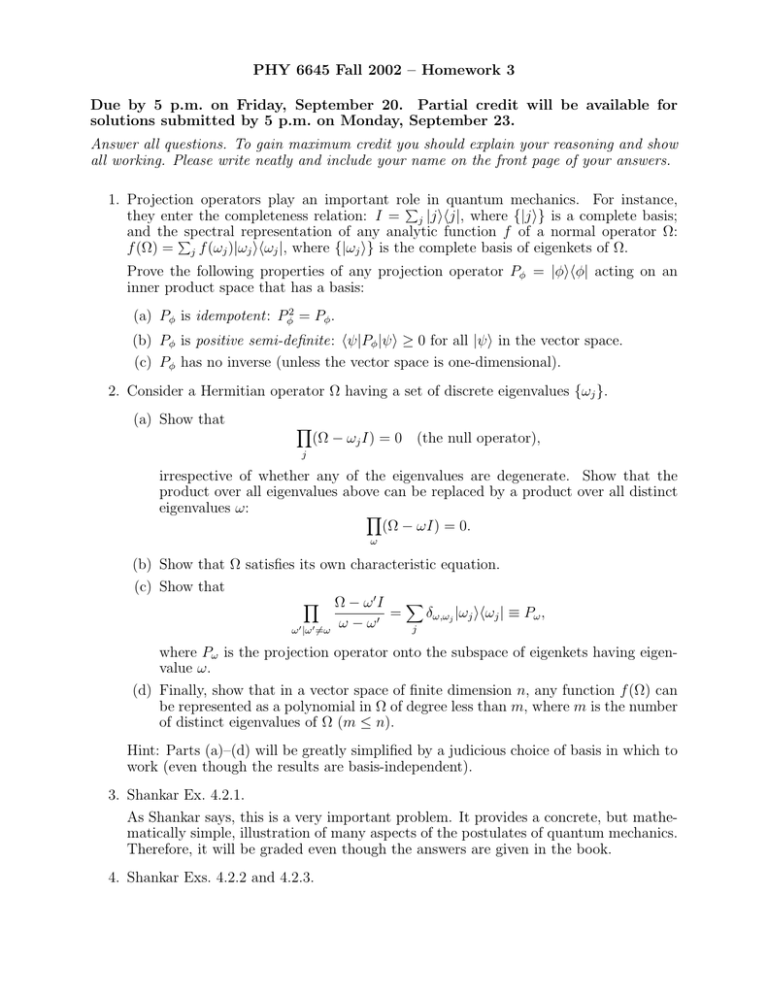
PHY 6645 Fall 2002 – Homework 3
Due by 5 p.m. on Friday, September 20. Partial credit will be available for
solutions submitted by 5 p.m. on Monday, September 23.
Answer all questions. To gain maximum credit you should explain your reasoning and show
all working. Please write neatly and include your name on the front page of your answers.
1. Projection operators play an important role
P in quantum mechanics. For instance,
they enter the completeness relation: I = j |jihj|, where {|ji} is a complete basis;
and thePspectral representation of any analytic function f of a normal operator Ω:
f (Ω) = j f (ωj )|ωj ihωj |, where {|ωj i} is the complete basis of eigenkets of Ω.
Prove the following properties of any projection operator Pφ = |φihφ| acting on an
inner product space that has a basis:
(a) Pφ is idempotent: Pφ2 = Pφ .
(b) Pφ is positive semi-definite: hψ|Pφ |ψi ≥ 0 for all |ψi in the vector space.
(c) Pφ has no inverse (unless the vector space is one-dimensional).
2. Consider a Hermitian operator Ω having a set of discrete eigenvalues {ωj }.
(a) Show that
Y
j
(Ω − ωj I) = 0 (the null operator),
irrespective of whether any of the eigenvalues are degenerate. Show that the
product over all eigenvalues above can be replaced by a product over all distinct
eigenvalues ω:
Y
(Ω − ωI) = 0.
ω
(b) Show that Ω satisfies its own characteristic equation.
(c) Show that
Y Ω − ω0I
X
=
δω,ωj |ωj ihωj | ≡ Pω ,
ω − ω0
j
ω 0 |ω 0 6=ω
where Pω is the projection operator onto the subspace of eigenkets having eigenvalue ω.
(d) Finally, show that in a vector space of finite dimension n, any function f (Ω) can
be represented as a polynomial in Ω of degree less than m, where m is the number
of distinct eigenvalues of Ω (m ≤ n).
Hint: Parts (a)–(d) will be greatly simplified by a judicious choice of basis in which to
work (even though the results are basis-independent).
3. Shankar Ex. 4.2.1.
As Shankar says, this is a very important problem. It provides a concrete, but mathematically simple, illustration of many aspects of the postulates of quantum mechanics.
Therefore, it will be graded even though the answers are given in the book.
4. Shankar Exs. 4.2.2 and 4.2.3.
